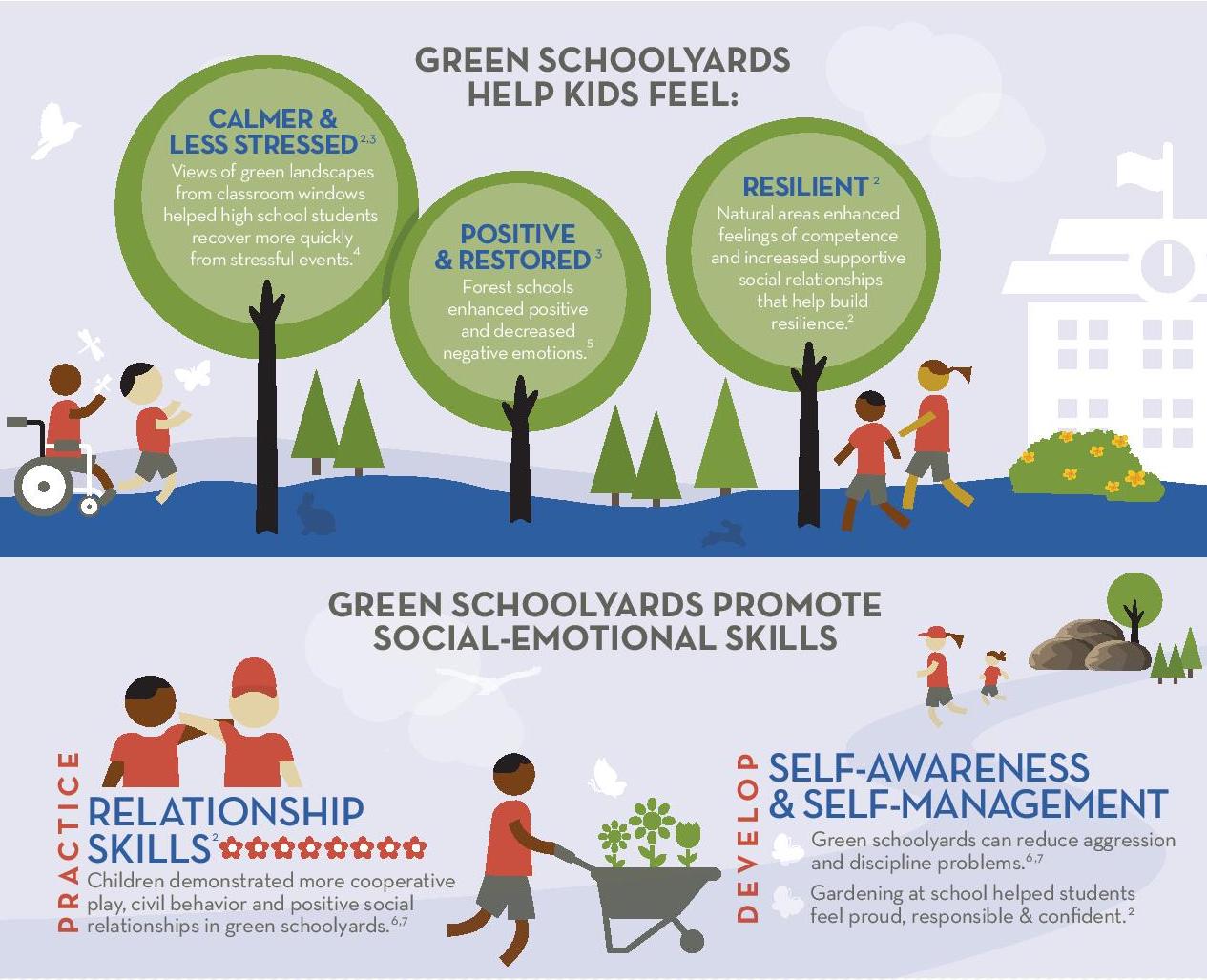Many schools let the general public use their fields and playgrounds when classes and practices aren’t in session. But in Michigan, leaders at Grand Rapids Public Schools—working with city government and other agencies—are taking this concept of sharing to the next level.
Officials are strategically enhancing school parks and playgrounds in parts of the city that lack sufficient green spaces. The parks’ features are designed with an eye toward outdoor learning as well as after-school and weekend community use (free of charge, of course).
The partners this fall were putting the finishing touches on their first project, a green schoolyard and outdoor classroom at Plaster Creek Family Park at Burton Elementary and Middle Schools.
Watch DATV: How parks solve problems for schools and cities
“It makes sense to activate that green space so it can be used to address park deficiencies and increase the number of residents who live within a 10-minute walk to a park or green space,” says John Helmholdt, the district’s executive director of communications and external affairs.
The park features an outdoor classroom called “The Nest.” With grant funds, the district recently hired an environmental education coordinator who is working with several local agencies, including a zoo, to build out a standards-aligned outdoor curriculum.
In one component of that curriculum, all fifth-graders will travel about 25 minutes west to study watershed issues at Lake Michigan. In another project, students will study the endangered snuffbox mussel during the restoration of a downtown stretch of the Grand River.
The new park includes a playscape with components made from locally harvested trees. The park also has improved athletic fields, accessible paths, and a garden that collects stormwater.
For winter use, the district and the city are planning to operate a “gear library” that would travel to parks and allow residents to try cross-country skis, snowshoes and other equipment.
Officials are now working on similar parks for a few other Grand Rapids schools, Helmholdt says.
‘Healthier, happier and smarter’
Leaders at Austin ISD have set a requirement for themselves around school parks and playgrounds. And per a construction bond passed in 2017, they must create an outdoor learning space anytime they build a new school or renovate an existing building.
At the forefront of these efforts are a pair of “green school parks” that the district and the city built on jointly owned land at two elementary schools. Sharing the spaces with the communities creates a stronger connection between families and their schools, says Anne Muller, the district’s outdoor learning specialist.
“We really have latched on to the idea that children who learn and play in nature are healthier, happier and smarter,” Muller says. “Children do a lot of learning and playing with their families, and if they live in a part of town that doesn’t have access to nature, those families are less likely to get outside.”
The first park, which opened in March 2018, was created at Barrington Elementary School because the district had identified the neighborhood as having insufficient access to nature, Muller says.
The city’s parks and recreation department installed a nature trail, wildflower meadow, vegetable garden and other features. To celebrate opening park, the school planted trees campuswide.
Austin ISD leaders and city personnel are now developing a similar facility at Wooldridge Elementary School.
More from DA: How to beat the widening youth sports gap
Austin ISD’s vision for outdoor learning is more than just “having an outdoor classroom or a seating area under trees,” says Darien Clary, the district’s sustainability manager. “The outdoors can be used as an interactive teaching tool across every content area,” Clary says.
For example, a class could go outside to read a book about pollinators and then search for the insects. Students could also make a graph of pollinators for a math assignment.
The ongoing parks projects have driven the district to think about creating professional development for teaching in outdoor spaces, Clary adds.
“We’ve also realized there’s a bit of a gap in the landscape architecture industry for designing outdoor learning spaces,” she says. “There’s been co-learning between the school district and the market on how to design these spaces.”
Who would care about this?
In Grand Rapids, Helmholdt says the parks initiative is driven by a strong partnership between the district and the city that dates back through decades of jointly owned properties.
But such a close relationship may not be common. A big sticking point sometimes revolves around who will be responsible for park maintenance, says Jaime Zaplatosch, director of green schoolyards for healthy communities at the Children & Nature Network.

Zaplatosch helps city and K-12 officials understand each other’s goals and needs when it comes to outdoor spaces. A nationwide push to create more park space in underserved neighborhoods, particularly in urban areas, is creating more city-district partnerships, Zaplatosch says.
More from DA: How unsupervised sunscreen use is gaining approval in K-12 districts
“Mental and physical health, and social-emotional well-being are all overlapping benefits for a school district and a city,” Zaplatosch says.
School administrators should involve as many stakeholders as possible when launching a parks partnership, and ensure that equitable access to green spaces is a priority, she says.
“Figure out who would care about this and set the table as big as possible to start the conversations,” she says.
Leaders also have to provide the PD and other supports to make teachers comfortable about taking classes outside. “It’s a different dynamic, and there’s different behavior management when you take away four walls and desks,” Zaplatosch says. “Think about what you’re already teaching that could be taught outside.”
Matt Zalaznick is senior writer.







